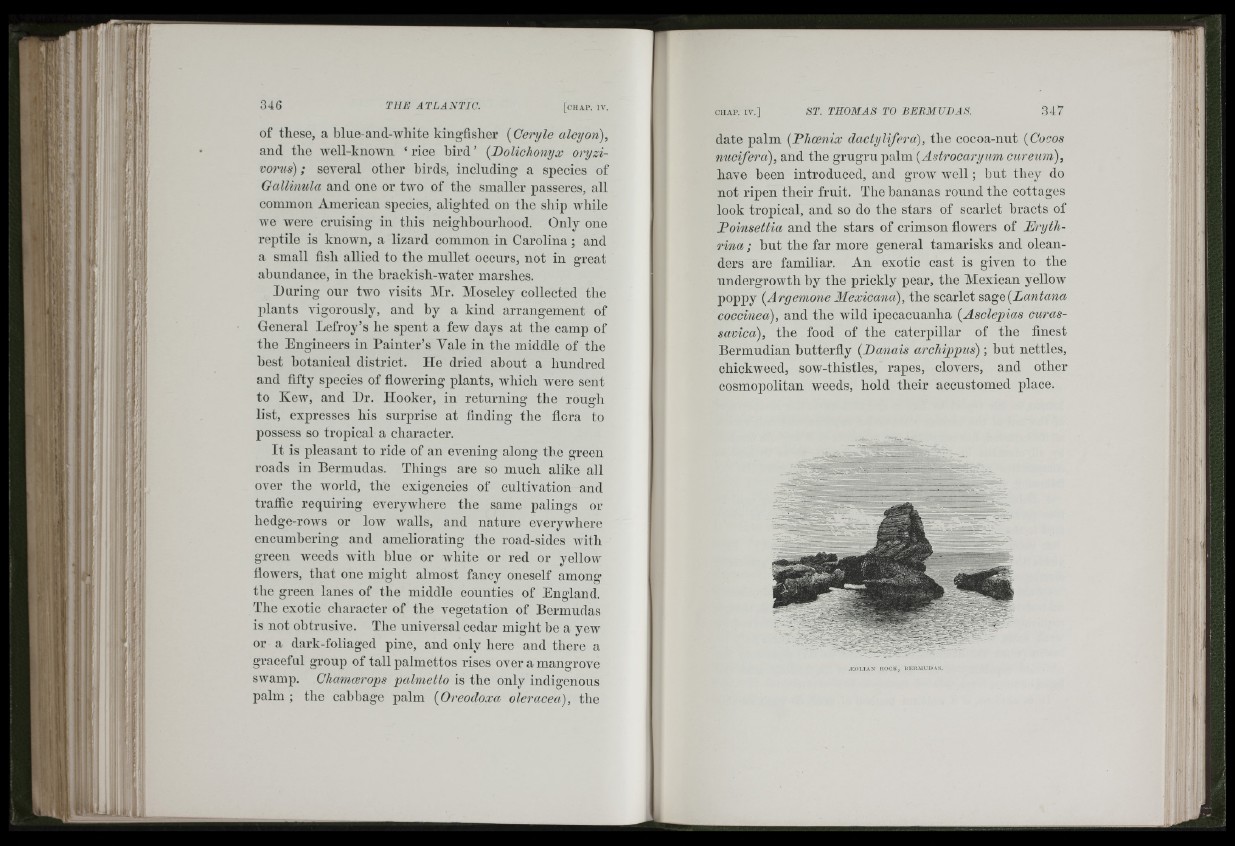
■ffi;-: 1 S ite
t V , I r i 1
■te. e:; . 3 »i, M • • • 4i -IJ»» .'
m
!iî-;
■ii
of these, a blue-and-white kingfisher (Ceryle alcyon),
and the well-known ‘ rice bird ’ [Doliclionyx oryzi-
vorus); several other birds, including a species of
Gallinula and one or tAvo of the smaller passeres, all
common American species, alighted on the ship while
Ave Avere cruising in this neighbourhood. Only one
reptile is known, a lizard common in Carolina; and
a small fish allied to the mullet occurs, not in great
ahundance, in the hrackish-water marshes.
During onr two visits Mr. Moseley collected the
plants vigorously, and hy a kind arrangement of
Ceneral Lefroy’s he spent a few days at the camp of
the Engineers in Pa in te r’s Vale in the middle of tlie
best hotanical district. He dried about a hundred
and fifty species of flowering plants, which were sent
to Kcav, and Dr. Hooker, in returning the rouHi
list, expresses his surprise at finding the flora to
possess so tropical a character.
It is pleasant to ride of an evening along the green
roads in Bermudas. Things are so much alike all
over the world, the exigencies of cultivation and
traffic requiring everyAvhere the same palings or
hedge-roAvs or Ioav Avails, and nature everyAvhere
encumbering and ameliorating the road-sides Avith
green weeds Avith blue or white or red or yelloAv
floAvers, that one might almost fancy oneself among
the green lanes of the middle counties of England.
The exotic character of the vegetation of Bermudas
is not obtrusive. The universal cedar might he a yeAv
or a dark-foliaged pine, and only here and there a
graceful group of tall palmettos rises over a mangroA'e
swamp. ChamcBrops palmetto is the only indigenous
palm ; the cabbage palm {Oreodoxa olerácea), the
date palm {Phoenix dactytiferà), the cocoa-nut {Cocos
nucífera), and the grugru palm {Astrocaryum cureiim),
have heen introduced, and groAV Avell ; but they do
not ripen their fruit. The bananas round the cottages
look tropical, and so do the stars of scarlet bracts of
Poinsettia and the stars of crimson flowers of Eryth-
rina ; h u t the far more general tamarisks and oleanders
are familiar. An exotic cast is given to the
undergrowth by the prickly pear, the Mexican yellow
poppy {Argemone Mexicana), the scarlet ss.^e{Lantana
coccinea), and the wild ipecacuanha {Asclepias curas-
savica), the food of the caterpillar of the finest
Bermudian butterfly {Danais archippus) ; but nettles,
chickweed, sow-thistles, rapes, clovers, and other
cosmopolitan weeds, hold their accustomed place.
2K 0T.TAN R O C K , B E l lM U U VH.
I
i l l